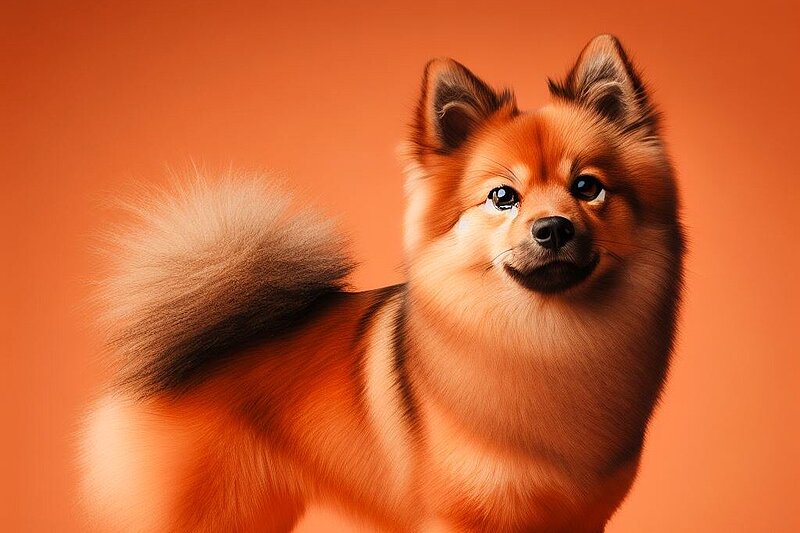The Finnish Spitz: A lively companion with charm and history
Origin and history
The Finnish Spitz has its roots in Finland and has been a loyal companion of the Finns for centuries. It was originally bred for hunting small and large animals such as birds and moose. Its extraordinary bark made it an invaluable helper in locating game. The breed was standardized as early as the 19th century and was given the status of Finland's national dog in 1979. Today, the Finnish Spitz is recognized worldwide as a versatile hunting and companion dog.
Who is the Finnish Spitz suitable for?
The Finnish Spitz is ideal for active people and families who spend a lot of time outdoors. Due to its high energy level and hunting instinct, it needs plenty of exercise and mental stimulation. Those who enjoy hiking, jogging or generally spending a lot of time outdoors will find him the perfect companion. Families with children will benefit from his friendly and playful nature, while individuals will appreciate his loyalty and alertness.
Character and behavior
The Finnish Spitz is known for its intelligence, liveliness and independence. It is alert, courageous and has a strong hunting instinct. Despite its independence, it is very loyal and affectionate towards its owner. In the family, he is a playful and friendly companion who gets on particularly well with children. He is initially reserved towards strangers, which makes him a good watchdog.
Appearance
With its fox-like appearance, the Finnish Spitz is easy to recognize. It has a medium-sized build, erect ears and a bushy tail that curls over its back. Its dense, reddish-gold coat protects it from the harsh weather conditions of its homeland. The eyes are dark and lively, giving its face a watchful expression.
Grooming and health
Coat care
The Finnish Spitz has a dense, double coat that should be brushed regularly to avoid matting and excessive shedding. Daily brushing is particularly recommended during the spring and fall shedding season. An occasional bath is sufficient to keep the coat clean and healthy.
Health
The Finnish Spitz is generally a robust and healthy breed. However, as with all breeds, there are some health problems to watch out for. These include hip dysplasia and patellar luxation. Regular visits to the vet and a balanced diet contribute to the dog's health and longevity.
Size and weight
An adult Finnish Spitz reaches a shoulder height of around 39 to 50 cm and a weight of 7 to 13 kg. Males are usually slightly larger and heavier than females.
Exercise requirements and husbandry
The Finnish Spitz has a high need for exercise and requires plenty of daily exercise. Long walks, jogging and playing in the garden are ideal to keep them physically and mentally active. He is more suited to living in the countryside or in a house with a garden than in a small city apartment. Nevertheless, he can also adapt to city life as long as he gets enough exercise and activity.
Training recommendations
The Finnish Spitz is intelligent and capable of learning, but also headstrong. Consistent but loving training is therefore important. Positive reinforcement and varied training methods are the key to success. Due to his hunting instinct, it is advisable to get him used to being called at an early age and to let him run in a safe environment.
Behavior with children and other animals
The Finnish Spitz is an excellent family dog that gets along well with children. He is playful and patient, which makes him a great playmate. It can get along well with other pets, especially cats, if it is accustomed to them from an early age. However, his hunting instinct should not be underestimated, so interaction with smaller animals should be supervised.
FCI recognition and further information
The Finnish Spitz is recognized by the Fédération Cynologique Internationale (FCI) and belongs to Group 5 (Spitz and Primitive Type Dogs), Section 2 (Nordic Hunting Dogs). This breed is known for its pronounced barking ability, which is very useful in hunting, but can lead to problems in everyday life if not controlled.
